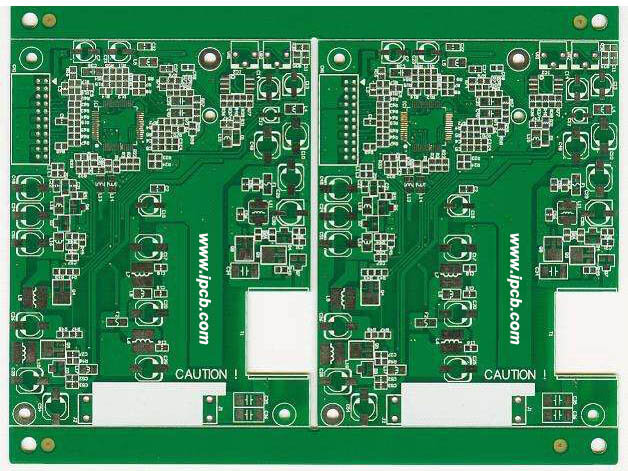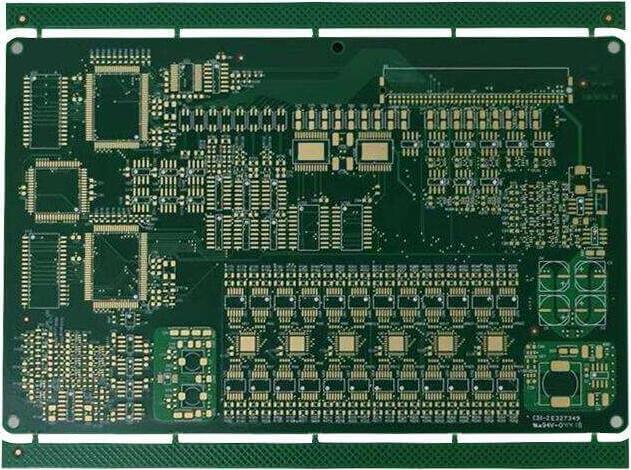What is a halogen-free PCB?
1. According to the JPCA-ES-01-2003 standard: Copper clad laminates with chlorine (C1) and bromine (Br) content less than 0.09% Wt (weight ratio) are defined as halogen-free copper clad laminates. (At the same time, the total amount of CI+Br≤0.15%[1500PPM])
1.2 Why ban halogen?
Halogen refers to the halogen elements in the periodic table of chemical elements, including fluorine (F), chlorine (Cl), bromine (Br), and iodine. At present, flame retardant substrates, FR4, CEM-3, etc., flame retardants are mostly brominated epoxy resin. Among the brominated epoxy resins, tetrabromobisphenol A, polymeric polybrominated biphenyls, polymeric polybrominated diphenyl ethers, and polybrominated diphenyl ethers are the main fuel barriers for copper-clad laminates. They have low cost and are compatible with epoxy resins. However, studies by related institutions have shown that halogen-containing flame-retardant materials (Polybrominated Biphenyls PBB: Polybrominated Diphenyl Ethyl PBDE) will emit dioxin (dioxin TCDD), benzofuran (Benzfuran), etc. when they are discarded and burned. A large amount of smoke, unpleasant smell, highly toxic gas, carcinogenic, can not be discharged after ingestion, not environmentally friendly, and affect human health. Therefore, the European Union initiated the prohibition of using PBB and PBDE as flame retardants in electronic information products. The Ministry of Information Industry of China also requires that as of July 1, 2006, electronic information products put on the market must not contain substances such as lead, mercury, hexavalent chromium, polybrominated biphenyls, or polybrominated diphenyl ethers.
The EU law prohibits the use of six substances including PBB and PBDE. It is understood that PBB and PBDE are basically no longer used in the copper-clad laminate industry, and bromine flame retardant materials other than PBB and PBDE, such as tetrabromide, are mostly used. The chemical formula of bisphenol A, bromophenol, etc. is CISHIZOBr4. This type of copper-clad laminate containing bromine as a flame retardant is not regulated by any laws and regulations, but this type of bromine-containing copper-clad laminate will release a large amount of toxic gas (brominated type) and emit a large amount of smoke during combustion or electrical fire. ; When the PCB is leveled with hot air and components are soldered, the plate is affected by high temperature (>200), and a trace amount of hydrogen bromide will be released; whether it will also produce dioxins is still under evaluation. Therefore, FR4 sheets containing tetrabromobisphenol A flame retardant are not currently prohibited by law and can still be used, but they cannot be called halogen-free sheets.

This article discusses the processing characteristics of halogen-free printed boards and some experience in the processing process.
1.3 Principle of halogen-free substrate
For now, most of the halogen-free materials are mainly phosphorus-based and phosphorus-nitrogen-based. When the phosphorous resin is burned, it is decomposed by heat to generate meta-polyphosphoric acid, which has strong dehydration property, so that a carbonized film is formed on the surface of the polymer resin, which insulates the burning surface of the resin from contact with air, extinguishes the fire, and achieves a flame-retardant effect. The polymer resin containing phosphorus and nitrogen compounds generates incombustible gas when burned, which helps the resin system to be flame-retardant.
2. Features of halogen-free sheet
2.1 Insulation of materials
Due to the use of P or N to replace the halogen atoms, the polarity of the molecular bond segment of the epoxy resin is reduced to a certain extent, thereby improving the qualitative insulation resistance and resistance to breakdown.
2.2 Water absorption of materials
The halogen-free sheet material has fewer electrons than halogens in the nitrogen-phosphorus-based oxygen reduction resin. The probability of forming hydrogen bonds with hydrogen atoms in water is lower than that of halogen materials, so the water absorption of the material is lower than Conventional halogen-based flame retardant materials. For the board, low water absorption has a certain impact on improving the reliability and stability of the material.
2.3 Thermal stability of materials
The content of nitrogen and phosphorus in the halogen-free sheet material is greater than the halogen content of ordinary halogen-based materials, so its monomer molecular weight and Tg value have increased. When heated, its molecular mobility will be lower than that of conventional epoxy resins, so the coefficient of thermal expansion of halogen-free materials is relatively small.
3. Experience in producing halogen-free PCB
Halogen-free sheet supplier
At present, there are a large number of sheet suppliers that have developed or are developing halogen-free copper-clad laminates and corresponding prepregs. Currently, there are Polyclad's PCL-FR-226/240, Isola's DEl04TS, Shengyi S1155/S0455, Nanya, Hongren GA-HF, and Matsushita Electric Works GX series, etc.
3.1 Laminating:
The lamination parameters may be different for different companies. Take the above-mentioned Shengyi substrate and PP as a multi-layer board. In order to ensure the full flow of the resin and make the bonding force good, it requires a lower heating rate (1.0-1.5°C/min) and multi-stage Pressure fitting requires a longer time in the high-temperature stage and maintains at 180°C for more than 50 minutes. The following is a recommended set of platen program settings and the actual temperature rise of the plate. The bonding force between the copper foil and the substrate of the extruded board was 1. ON/mm, and the board after drawing electricity did not show delamination or air bubbles after six thermal shocks.
3.2 Drilling processability:
The drilling condition is an important parameter, which directly affects the quality of the hole wall of the PCB during processing. The halogen-free copper-clad laminate uses P and N series, functional groups, to increase the molecular weight and the rigidity of the molecular bond, thereby also enhancing the rigidity of the material. At the same time, the Tg point of halogen-free materials is generally higher than that of ordinary copper-clad laminates, so ordinary Drilling with the drilling parameters of FR-4, the effect is generally not very satisfactory. When drilling halogen-free boards, some adjustments should be made under normal drilling conditions.
For example, the four-layer board made of Shengyi S1155/S0455 core board and PP, the drilling parameters are not the same as the normal drilling parameters. When drilling halogen-free plates, the speed should be increased by 5-10% faster than the normal parameters, while the feed and retreat speeds should be reduced by 10-15% compared with the normal parameters. In this way, the roughness of the drilled hole is small.
3.3 Alkali resistance
Generally, the alkali resistance of halogen-free plates is worse than that of ordinary FR-4. Therefore, in the etching process and the rework process after the solder mask, special attention should be paid to the immersion time in the alkaline stripping solution. To prevent white spots on the substrate. In the actual production, I have suffered a lot: the halogen-free board that has been cured and soldered after the solder mask needs to be rewashed due to some problems. However, the normal FR-4 rewashing method is still used for the backwashing at a temperature of 75°C. After immersing in 10% NaOH for 40 minutes, all the white spots on the substrate were washed out, and the soaking time was shortened to 15-20 minutes. This problem no longer exists. Therefore, it is best to do the first board first to get the best parameters for the rework solder mask of the halogen-free board, and then rework in batches.
3.4 Production of halogen-free solder mask
At present, there are many kinds of halogen-free solder mask inks launched in the world, and their performance is not much different from that of ordinary liquid photosensitive ink. The specific operation is basically the same as that of ordinary ink.

halogen-free PCB
4. Conclusion
Halogen-free PCB board have low water absorption and meet the requirements of environmental protection, and other properties can also meet the quality requirements of PCB board. Therefore, the demand for halogen-free PCB board is increasing; and other major PCB suppliers More funds have been invested in the research and development of halogen-free PCB substrates and halogen-free PP. It is believed that low-priced halogen-free circuit board structures will be put on the market soon. Therefore, all PCB manufacturers should put the trial and use of halogen-free PCB on the agenda, formulate detailed plans, and gradually expand the number of halogen-free PCBs in the factory, so that they will be at the forefront of market demand.
IPCB is a halogen-free PCB manufacturer. For products manufactured by IPCB, click: Halogen free PCB